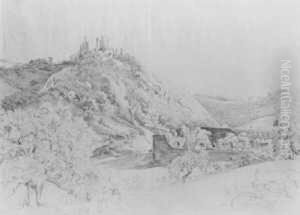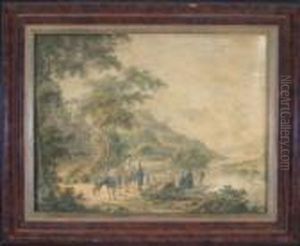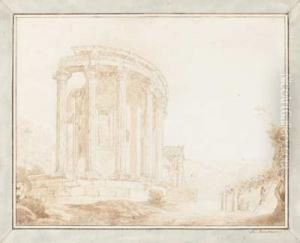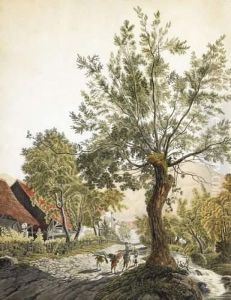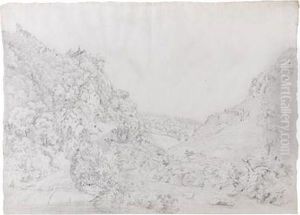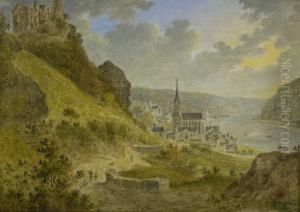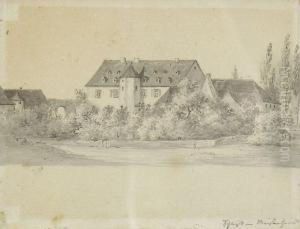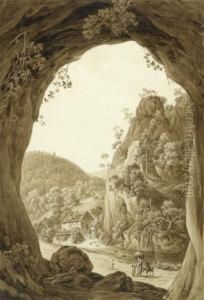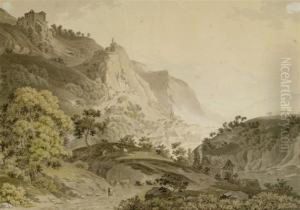Friedrich Chr. Reinermann Paintings
Friedrich Christian Reinermann was a German landscape painter and etcher who was born on October 19, 1764, in Kassel, Germany. He was part of the early 19th-century German Romantic movement, which emphasized the emotional and picturesque elements of landscape art, often with a sense of the sublime.
Reinermann initially trained under his father, who was also an artist, before enrolling at the Kassel Academy. His early works were influenced by the classical landscapes of the 17th-century French artist Claude Lorrain, whose Arcadian vistas and idealized nature scenes were highly esteemed by the Romantics. Reinermann adapted these influences to his own observations of the German countryside.
In 1793, Reinermann moved to Rome, which was a central hub for artists at the time. Here, he became part of a group of Northern European artists who would later be known as the 'Deutsch Römer' (German Romans). During his time in Italy, Reinermann's style evolved as he was exposed to the work of other artists and the Italian landscape. His paintings from this period reflect a blend of precise topographical detail and atmospheric effects, capturing the unique light and mood of the Italian countryside.
After returning to Germany, Reinermann continued to paint and exhibit his works, which were well-received. He became known for his panoramic views and his ability to depict the changing seasons and times of day, a testament to his detailed observation and deep appreciation of nature.
Reinermann's contribution to landscape painting was significant. He helped pave the way for later generations of Romantic painters in Germany, who would continue to explore the emotional and symbolic potential of the landscape. His works are characterized by a harmonious balance between realism and idealization, which was a hallmark of the Romantic approach to landscape art.
Friedrich Christian Reinermann died on December 15, 1835, in Frankfurt am Main, Germany. His legacy lives on through his paintings, which continue to be appreciated for their beauty and their embodiment of Romantic ideals.
